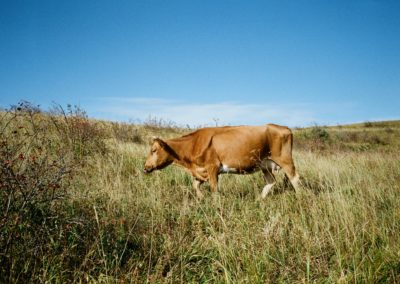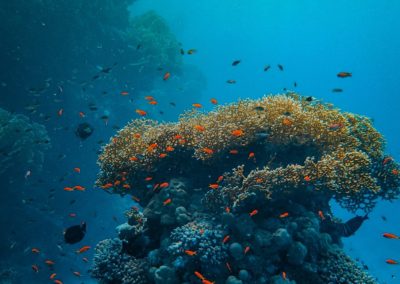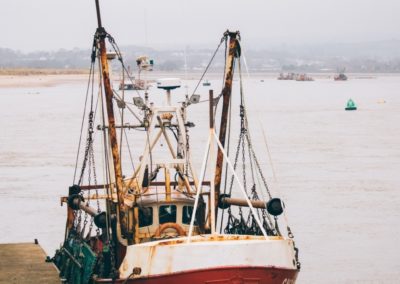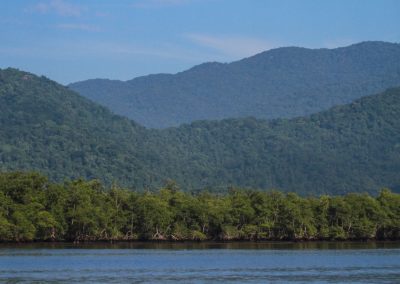Optimized landscapes in East Kalimantan
Background
Agricultural development, including intensification and expansion of agricultural land use and management, is a primary driver of forest and biodiversity loss in tropical forests. In many tropical countries where developing and sustaining agricultural economies are both economic and political priorities, the production–biodiversity conservation trade‐off is becoming increasingly critical and complex to manage. In such ‘multifunctional’ landscapes, where many stakeholders seek a variety of benefits, target achievement for multiple objectives is likely to entail competition and conflict between stakeholder groups. Effective land‐use planning provides an approach to resolve such tensions.
In Law et al. (2016), we have developed a new method to help land managers manage expectations: using Marxan with Zones to construct trade-off curves, otherwise known as production possibility frontiers.
Production Possibility Frontiers
In this paper, we construct PPF curves for a multiple‐objective trade‐off problem in the Ex‐Mega Rice Project (EMRP) region of Central Kalimantan, Indonesian Borneo. The EMRP area is a tropical peat forest region with substantial biodiversity but also strong pressures for agricultural development, as well as a globally important area for reducing carbon emissions from land use, particularly from burning peat in recent years. Local, industrial and global stakeholders are characterized by their focus on local food production, development of local economies and improvement of biodiversity and carbon emissions, respectively. The landscape is strongly heterogeneous, due to both biophysical conditions and past development history, and includes areas of extant forest, degraded forest and abandoned deforested areas, and production land uses.
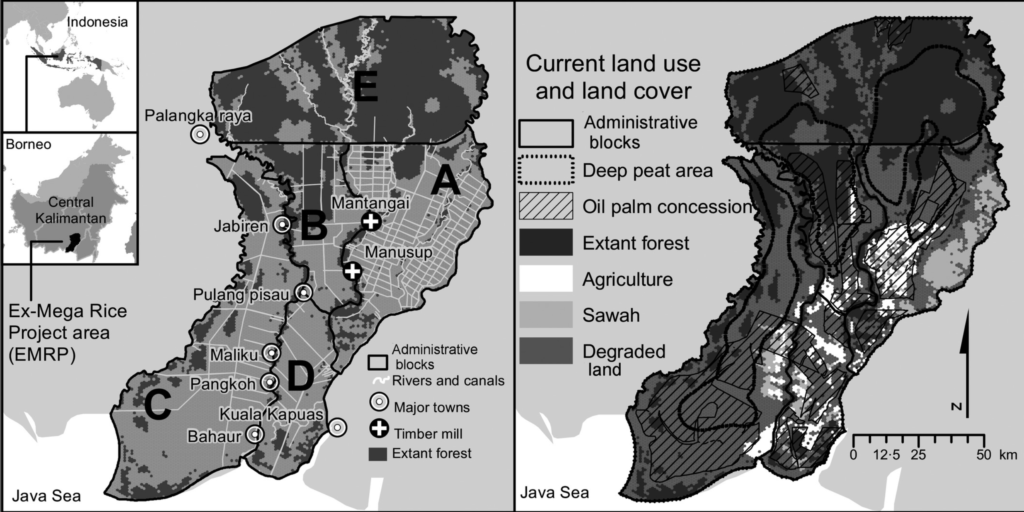
Study site location, current land use and land cover.
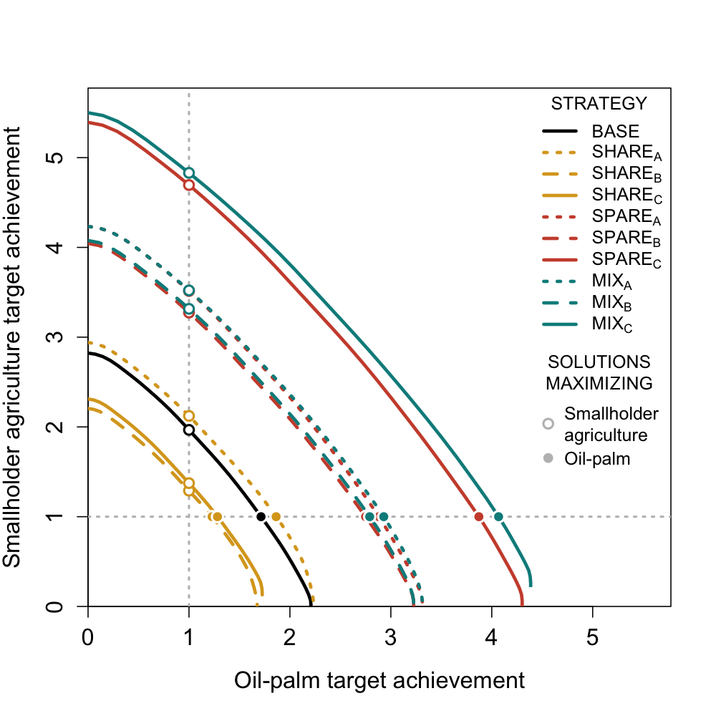
Production possibility frontiers show maximum smallholder agriculture and oil palm target achievement, subject to the achievement of biodiversity, forestry and carbon emissions mitigation targets. See paper for more details.
Production possibility frontiers show the maximum outcomes possible, when land allocation is optimised and constraints, such as achieving timber production or biodiversity conservation targets, are satisfied. Using Marxan with Zones we were able to construct production possibility frontiers quickly and easily.
Production possibility frontiers show maximum smallholder agriculture and oil palm target achievement, subject to the achievement of biodiversity, forestry and carbon emissions mitigation targets.
Results
In previous work on this region, we have mapped ecosystem services, looked at the best metrics for carbon management, developed simple models for looking at the preference for land sharing or land sparing, and looked at preferences for land-sharing and land-sparing when land-use is constrained by existing zoning plans. In this study we analysed the potential outcomes under ten alternative policy scenarios, including land-sharing, land-sparing, and mixed strategies, when land allocations are optimized. By optimising land-use allocation for multiple objectives, we can evaluate the full potential of these alternative strategies, even in complex, multifunctional landscapes.
We found that, while mixed policy and land-sparing strategies offered the most flexibility, all scenarios tested, including land-sharing, could satisfy all stakeholder objectives, when land use is optimized. However in order to do this, at minimum 29-37% of the landscape would require forest protection. Most of this includes the remaining forest patches, with some restoration of particularly threatened ecosystems.
This approach provides practical options for landscape planning in complex, multifunctional landscapes, and can inform the design of land-use policies that maximize stakeholder satisfaction and minimize conflict. When using targets sought by multiple stakeholders within an ecosystem services framework, production possibility frontiers can characterize biophysical, socio-economic, and institutional dimensions of policy trade-offs in heterogeneous landscapes. For the Ex-Mega Rice Project, this analysis has provided evidence that this landscape can fulfil diverse stakeholder needs and desires, and shows the complementarity of development and biodiversity protection in achieving these goals.

References:
References
Law et al. 2016. Mixed policies give more options in multifunctional tropical forest landscapes
Contact Information:


